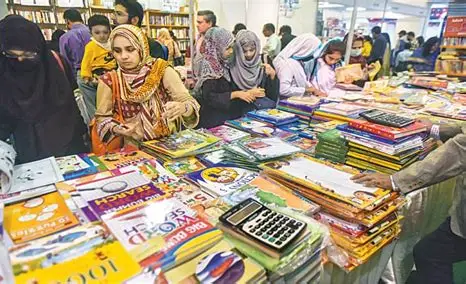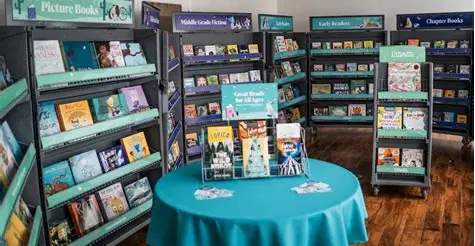Introduction
In recent years, Pakistan has witnessed a remarkable revival of its reading culture. After a long period where television, smartphones, and social media dominated leisure time, young Pakistanis are rediscovering the joy of books.
From bustling book fairs in Karachi and Lahore to online book communities and café libraries in Islamabad, reading is making a strong comeback. This revival reflects a growing hunger for knowledge, creativity, and connection in an age overwhelmed by digital noise.

The Role of Book Fairs and Libraries
Book fairs and libraries have become the backbone of Pakistan’s reading revival, connecting communities, authors, and readers across the nation. Over the past decade, large-scale literary festivals such as the Karachi Literature Festival (KLF), Lahore Literary Festival (LLF), and Islamabad Literature Festival have evolved into cultural landmarks.
These events not only attract thousands of attendees annually but also feature panel discussions, book launches, poetry recitals, and author meetups that celebrate both local and international literature.
These festivals provide a vibrant space for dialogue — where ideas about society, politics, art, and philosophy are openly discussed. Students and teachers attend to gain exposure, while young writers find motivation to publish their own work.
Importantly, they highlight Pakistani authors who have achieved global recognition, such as Mohsin Hamid, Kamila Shamsie, and Fatima Bhutto, inspiring a new generation of storytellers. Libraries, once seen as outdated, are also being transformed.
The National Library of Pakistan in Islamabad, British Council libraries, and numerous university and community libraries are adopting modern systems, including digital catalogs, Wi-Fi access, and multimedia reading spaces. This modernization has made libraries more inviting, especially to young people who seek quiet environments for studying or personal growth.
In smaller cities like Peshawar, Multan, and Faisalabad, youth-driven movements have taken the lead in opening free community libraries and book-sharing corners. These grassroots efforts demonstrate that reading is no longer confined to elite urban centers — it is becoming a nationwide movement powered by passion and accessibility.

Rise of Online Book Communities
Interestingly, the internet — once blamed for reducing reading habits — is now helping to rebuild them. Social media platforms like Instagram, Facebook, and TikTok have given rise to a wave of digital book clubs and communities.
Groups such as Bookay.pk, Readers of Pakistan, and Karachi Book Club bring together thousands of young readers who exchange book recommendations, post reviews, and organize reading challenges.
This online ecosystem has transformed reading from a solitary hobby into a social, interactive experience. Readers now discuss novels through live sessions, comment threads, and video summaries, building a sense of belonging within Pakistan’s literary community.
These online platforms have also encouraged more people to explore local authors and Urdu literature, creating pride in homegrown talent. E-commerce websites such as Liberty Books, Readings.pk, and Bookberry have further supported this movement by making books easier to purchase and more affordable.
Many of these stores offer discounts, quick delivery, and pre-order options for international titles. Digital reading apps and e-book services have also gained traction, giving readers instant access to thousands of books through their phones or tablets.
For students and professionals living in remote areas, these digital resources are a game changer. They break geographical barriers, allowing anyone with an internet connection to build a personal library and join global reading communities.
In essence, Pakistan’s reading culture is being redefined by both tradition and technology — blending the charm of book fairs and libraries with the accessibility and engagement of the digital world. This dual approach ensures that literature remains alive, evolving, and deeply rooted in the nation’s growing intellectual spirit.
Youth and the Power of Storytelling
In today’s Pakistan, the youth are redefining how stories are told and shared. Unlike previous generations that relied mainly on traditional publishing, young Pakistanis now have access to a global audience through social media platforms, online writing communities, and self-publishing tools.
Platforms such as Wattpad, Medium, and Substack have opened new doors for writers to express themselves freely, while Instagram and YouTube allow storytellers to combine visual and written narratives.
This new wave of creativity is not limited to one language or format. Young authors are writing Urdu poetry, English fiction, micro-stories, and even bilingual literature that reflects Pakistan’s cultural diversity. The youth are using storytelling to discuss social issues, identity, mental health, and personal growth — topics that resonate deeply with modern audiences.
Renowned authors like Musharraf Ali Farooqi, Sabyn Javeri, and Fatima Bhutto serve as powerful inspirations, proving that Pakistani voices can thrive on international platforms. At the same time, many schools, colleges, and universities are actively reviving reading and writing clubs, hosting literary competitions, and integrating creative writing into their curriculum.
This renewed emphasis helps students strengthen their imagination, critical thinking, and emotional intelligence — skills essential in the digital era. Digital storytelling is also evolving through blogs, podcasts, and video essays, where young creators merge words with visuals and sound.
This multimedia form of literature attracts wider audiences and keeps the essence of storytelling alive in modern formats. Ultimately, the youth are not just consumers of literature — they are active contributors, shaping Pakistan’s literary future through creativity, technology, and cultural pride.
Book Cafés and Modern Reading Spaces
The revival of reading culture in Pakistan is also visible in the rise of book cafés and modern reading spaces across urban areas. These spots blend literature with lifestyle, offering readers cozy, creative environments where they can unwind with a book, a cup of coffee, and good company.
Cafés such as The Last Word in Lahore, Chaaye Khana in Islamabad, and Café Blue Turtle in Karachi have become cultural hubs where writers, students, and intellectuals gather for book discussions, poetry readings, and open mic nights.
These venues create a sense of community around books — a place where ideas are exchanged, friendships are built, and creativity flourishes. Book cafés are more than just trendy hangouts; they are symbols of Pakistan’s intellectual revival.
They attract people who value conversation, reflection, and creativity in a world increasingly dominated by screens. The relaxed atmosphere of these cafés encourages young people to read for pleasure, discover new authors, and participate in literary culture in a modern, engaging way.
Some cafés even organize book swaps, mini book fairs, and author meetups, bridging the gap between traditional and contemporary forms of reading. This fusion of culture and comfort has made reading relevant again — turning it into a social experience rather than a solitary one.
In essence, Pakistan’s book cafés and storytelling youth are breathing new life into the nation’s literary scene. They represent a generation that values depth over distraction, creativity over consumption, and community over isolation — a promising sign that Pakistan’s reading culture is not only coming back but thriving stronger than ever.

Challenges and the Way Forward
While Pakistan’s reading culture is experiencing a revival, it still faces significant challenges that need long-term attention. One of the primary issues is the high cost of books, especially imported ones. With rising inflation and currency devaluation, new books have become increasingly expensive for the average reader.
This makes it difficult for students and book lovers to regularly buy titles, limiting access to diverse reading material. Local publishers and writers also face hurdles in printing and distribution due to these economic constraints.
Another challenge is the lack of well-funded libraries across the country. Although major cities like Karachi, Lahore, and Islamabad have active libraries, many small towns and rural areas still lack proper reading spaces. Public libraries often struggle with outdated collections, insufficient budgets, and limited accessibility.
In many schools, libraries are either non-functional or rarely used, preventing young students from developing reading habits early in life. Additionally, digital distractions pose another barrier. The rise of smartphones, streaming platforms, and short-form content has shifted attention spans, making reading seem “slow” or “boring” to some young people.
However, this is slowly changing as more influencers, educators, and online book clubs use digital platforms to promote reading in engaging ways. Despite these challenges, the future holds promise. Several social initiatives, educational programs, and tech-driven startups are working to make reading more accessible.
For example, mobile libraries and free book exchange programs are being launched in smaller cities and rural communities to reach readers who have limited access to books. NGOs and universities are organizing reading competitions and literacy drives, motivating children and youth to pick up books again.
The rise of e-books and audiobooks is also bridging the gap. Digital libraries and reading apps allow anyone with a smartphone to access literature in Urdu, English, and regional languages — reducing the need for expensive physical copies. These innovations are helping democratize reading across economic and geographic boundaries.
Conclusion
The comeback of reading culture in Pakistan represents much more than a renewed interest in books — it signifies a deeper shift toward intellectual growth, creativity, and thoughtful living in a world dominated by screens. As more young people turn to literature for inspiration, mental clarity, and emotional expression, Pakistan’s literary future is growing brighter.
This movement is not confined to classrooms or libraries. It is spreading through cafés, online communities, and social movements that connect people through ideas. Readers are transforming into writers, thinkers, and changemakers, proving that stories still have the power to unite and inspire.
If nurtured with consistent effort — through better library systems, affordable publishing, and tech-based access — Pakistan’s reading culture can evolve into a nationwide movement of education, creativity, and empathy.
The new generation of readers isn’t just consuming words; they are creating a culture of curiosity and critical thinking, shaping a more informed and imaginative society for the years ahead.
